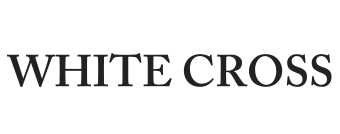日本語AIでPubMedを検索
ロボットアーム支援膝手術:経済分析
Robotic arm-assisted knee surgery: an economic analysis.
PMID: 32672918 DOI: 10.37765/ajmc.2020.43763.
抄録
目的:
メディケア集団を対象としたこれまでの研究では、ロボットアーム支援膝関節形成術(RATKA)により転帰が改善され、90日分のケア費用が減少したことが示されている。本研究の目的は、65歳未満の若年層におけるRATKA後の支出と利用率を評価することであった。
OBJECTIVES: Previous studies on Medicare populations have shown improved outcomes and decreased 90-day episode-of-care costs with robotic arm-assisted total knee arthroplasty (RATKA). The purpose of this study was to evaluate expenditures and utilization following RATKA in the population younger than 65 years.
研究デザイン:
これは、商業的クレームデータセットのレトロスペクティブな縦断的分析である。
STUDY DESIGN: This is a retrospective longitudinal analysis of a commercial claims data set.
方法:
TKA手技はOptumInsight Incのデータベースを使用して同定された。手技はRATKAと手動TKA(MTKA)コホートの2つのグループに層別化された。傾向スコアのマッチングは1:5で行われた。合計357件のRATKA手技と1785件のMTKA手技がこの分析に含まれた。
METHODS: TKA procedures were identified using the OptumInsight Inc database. The procedures were stratified in 2 groups: the RATKA and manual TKA (MTKA) cohorts. Propensity score matching was performed at 1:5. Utilization and associated costs were analyzed for 90 days following the index procedure. A total of 357 RATKA and 1785 MTKA procedures were included in this analysis.
結果:
手術後 90 日以内に RATKA を受けた患者は,入院サービスを利用する可能性が低かった(2.24% vs 4.37%; P=0.0444),熟練看護施設を利用する可能性が低かった(1.68% vs 6.05%; P<.0001).RATKA群では入院リハビリテーションに行った患者はいなかったが、MTKA群では0.90%の患者が入院リハビリテーション施設に行っていた。RATKA群では在宅医療補助者を利用した患者の在宅医療日数は有意に少なかった(5.33日 vs 6.36日;P=.0037)。手術後の支出全体に関連する費用は、RATKA群で1332ドル少なかった(6857ドル対8189ドル;P=.0018)。90日全体の支出(指標+手術後)はRATKA群で4049ドル少なかった(2万8,204ドル対3万2,253ドル;P<.0001)。手術後の滞在期間はRATKA群で1日近く短縮された(1.80日 vs 2.72日;P<.0001)。
RESULTS: Within 90 days post surgery, patients who had RATKA were less likely to utilize inpatient services (2.24% vs 4.37%; P = .0444) and skilled nursing facilities (1.68% vs 6.05%; P < .0001). No patients in the RATKA group went to inpatient rehabilitation, whereas 0.90% of the MTKA arm went to an inpatient rehabilitation facility. Patients who utilized home health aides in the RATKA arm utilized significantly fewer home health days (5.33 vs 6.36 days; P = .0037). Costs associated with overall postsurgery expenditures were $1332 less in the RATKA arm ($6857 vs $8189; P = .0018). The 90-day global expenditures (index plus post surgery) were $4049 less in the RATKA arm ($28,204 vs $32,253; P < .0001). Length of stay after surgery was nearly a day less for the RATKA arm (1.80 vs 2.72 days; P < .0001).
結論:
RATKAはMTKAと比較して入院期間の短縮、サービスの利用率の減少、90日分の支払者コストの減少と関連していた。
CONCLUSIONS: RATKA was associated with shorter length of stay, reduced utilization of services, and reduced 90-day payer costs compared with MTKA.


